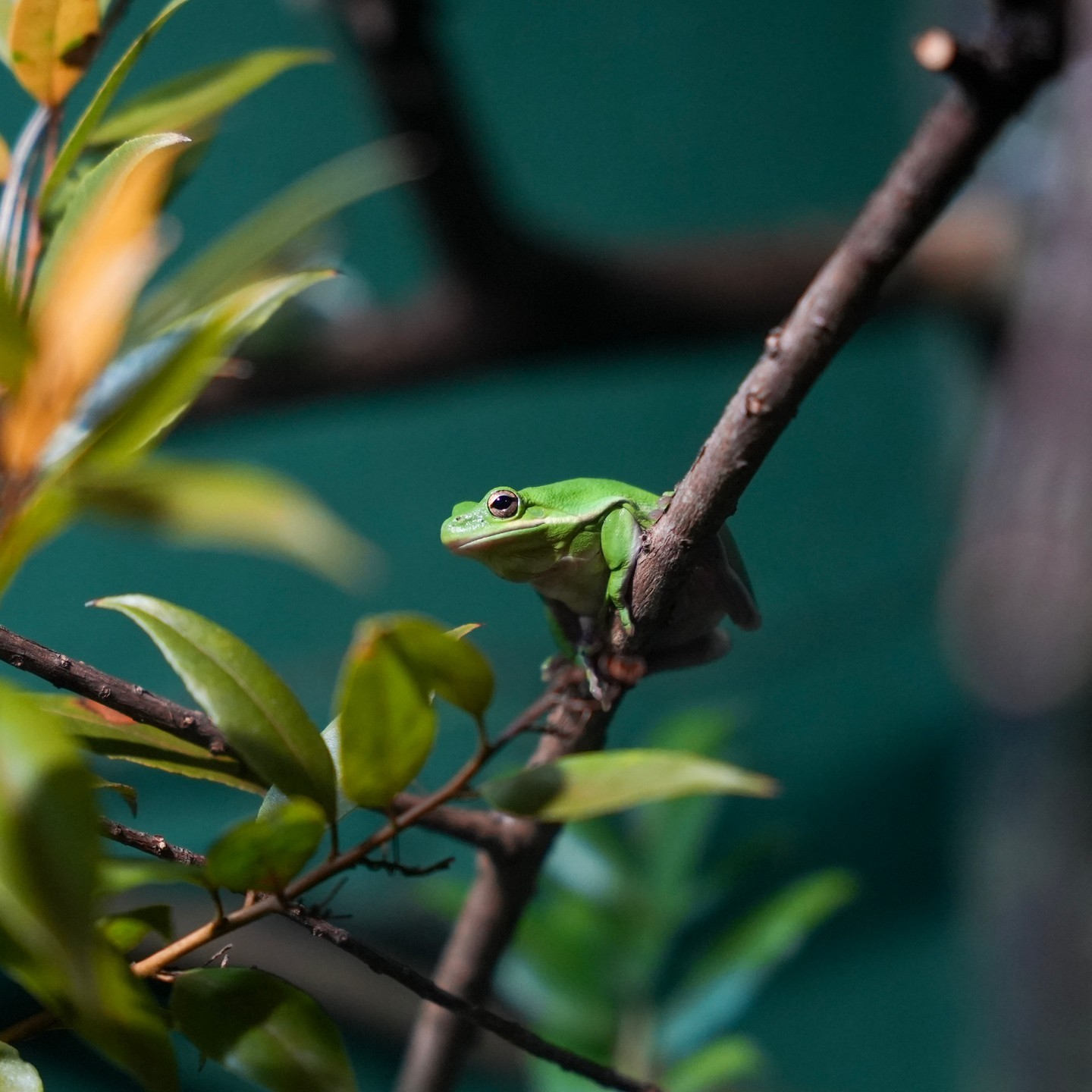- Introduction and Overview of the Ribbit-ing Announcement for 2025
- Detailed Analysis of Featured Frogs and Their Unique Characteristics
- Zoological Importance and Habitat Information
- Wildlife Conservation Efforts and Challenges
- Visitor Experience and the Role of Zoos in Education
In the Piedmont gallery, preparations are underway for a ribbit-ing announcement set for 2025. This monumental event entails the introduction of over 40 new frog species to a diverse gallery. The dawn of this initiative signals a significant stride in zoology and wildlife conservation. With this in-depth article, we’ll take a closer look at the notable frogs making their debut, their ecological roles, the efforts in conservation, and the impact of these initiatives on both visitors and research communities.
One of the stars among this assembly includes the Green tree frog. Known scientifically as Hyla cinerea, this amphibian is celebrated for its vibrant green coloring. Native to the southeastern United States, this frog thrives in wet, arboreal areas. Its vivid color is complemented by sporadic yellow spots on its back, which play a crucial role in camouflage. By blending into foliage, it evades predators while establishing its territory. The Green tree frog’s diet is primarily composed of small insects, effectively managing local pest populations. These frogs contribute to maintaining a balanced ecosystem by controlling insect numbers.
The Cope’s gray tree frog introduces a fascinating defensive mechanism in its biology. Named Hyla chrysoscelis, this frog is distinguishable by its gray hue and its ability to change colors to blend with the environment. Residing in a variety of habitats from woodlands to suburban areas, its adaptive nature is noteworthy. The frog secretes a toxic mucus through its skin, a potent defense against predators, ensuring its survival despite threats. This defensive trait highlights the evolutionary adaptations amphibians have developed in response to predation pressures.
Next on the list is the Pine woods tree frog, or Hyla femoralis. Despite their small size, these frogs boast an incredible tree-climbing ability, often reaching heights up to 30 feet. Their preference for pine woodlands speaks to their name and highlights their niche adaptation. With their intricate call patterns during the breeding season, they play a role in communication research within amphibian species. The Pine woods tree frog showcases a lifestyle harmonious with the arboreal habitats they occupy, utilizing unique adaptations to thrive within such vertical spaces.
Squirrel tree frogs (Hyla squirella) round out this fantastic cast of amphibians. Their name is derived from their vocalizations, which closely mimic the chirps of squirrels. Found across the southeastern US and Cuba, they adapt well to various environments including suburban gardens and marshy areas. Their diet contributes to controlling insect populations in these regions. The resilience and adaptability of the Squirrel tree frog emphasize their ability to thrive amidst changing environmental conditions.
The inclusion of these frogs offers more than an opportunity for public viewing. It emphasizes the crucial role that such exhibits play in educating visitors about the ecological importance of frogs. Frogs contribute significantly to ecosystem health, acting as both predator and prey and supporting nutrient cycles. Highlighting these aspects provides insight into their ecological importance beyond surface-level appeal.
Conservation efforts are integral to managing populations of these amphibians. The challenges they face, including habitat destruction, climate change, and pollution, are addressed through dedicated conservation strategies. Zoos are increasingly pivotal in these efforts, functioning as repositories of genetic diversity and facilitating research programs focused on species survival plans. Collaborative efforts with universities and governmental organizations further extend conservation impacts beyond zoo walls.
For visitors, this initiative fosters a connection between humans and amphibians, deepening public appreciation for wildlife. Exhibits are designed to engage and educate, illustrating the behaviors, habitats, and ecological roles of each species. Interactive displays and educational programs aim to inspire interest in zoology and conservation, highlighting the importance of preserving biodiversity. By observing these frogs firsthand, visitors gain a tangible understanding of the challenges faced by wildlife and the importance of conservation action.
The 2025 announcement of over 40 new frogs at the Piedmont gallery stands as a testament to the role of zoos in modern conservation strategies and educational outreach. It offers a venue to admire and learn from the diverse biology of these amphibians, all while promoting the broader message of protecting our planet’s natural resources. Through extensive planning and dedication, these initiatives aim to foster a love for wildlife and a commitment to conservation among all who visit.
*****
Source Description
Get ready for a ribbet-ing announcement… we’re jumping into 2025 with over 40 new frogs in the Piedmont gallery! 🐸
Before you hop to and meet these new native creatures, get to know a few of the faces you might see:
💚 Green tree frog: While aptly named for their vibrant green hue, see if you can find the yellow spots on their back
🩶 Cope’s gray tree frog: These little gray amphibians produce a toxic mucus to defend against predators
🌲 Pine woods tree frog: Despite their small size, these frogs are known for climbing up to 30 feet in the tree
🐿️ Squirrel tree frog: The croaks of these little creatures resemble the chirps of a squirrel, hence their name
Stop by and see how many amphibian friends you can spot! 🔍 📸
.
.
.


